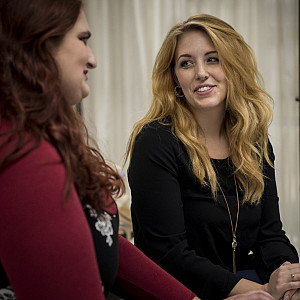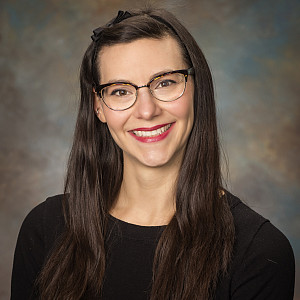Cocoons, civic theater, and creating community
Visiting Professor of Theater Anu Yadav began our interview by interrupting me. As I began my phone recording by asking a question, she jumped in and introduced herself, the date, and our location in the deep, dark maze of Neese Theater. “You’ve got to document,” she says. “As technology changes and shifts, this can be something that you can have—my voice—for many decades to come.” Then we laughed, and we continued to do so for the next half hour, between our simultaneously fast-paced and calming discussion about theater and social transformation.
Anu was selected as Beloit’s 2019 Pasquin Visiting Artist, an honor funded by director and producer John Pasquin’67 to support young artists from under-represented backgrounds who bring issues of inclusivity and activism into the teaching of theatre. Hailing from Washington, D.C., Anu ‘s brief tenure on campus this spring brought enthusiasm and awareness to members of the theater department.
She also wrote and directed the interactive workshop performance Butterfly, in conjunction with students Abby Bender’21, Joshua Andreas Block’20, Sage Green’21, and Gabrie Simmons’22. The first iteration of Butterfly will be 7 p.m. on Wednesday, May 8 and Thursday, May 9 in the Neese Theater’s Kresge Auditorium. The event is free to the public, and a potluck reception will follow the performances. The play will be reproduced in October.
“The reason I called it Butterfly is because when butterflies are caterpillars, they turn into the cocoon, then they break down into this goo, into imaginal cells,” she explains. “They literally break down into the smallest component—in imagined cells—that are the blueprint of what they wish to become or what they will become. What does it mean to break down to the essence of who we are so that we can have the space in our minds to be clear about, ‘Okay, now what do we want, and what can we want together and create together?”
Anu taught two other courses that grappled with these concepts in the spring semester: Inclusivity in Theater and Improvisation and Social Change. In the inclusivity class, she introduced the concept of civic theater, which can take place in any public sphere to serve some purpose for the community.
“Broadway is an institution, and it creates amazing work,” she says.”There are so many other ways that people create theater that are not given space.” Anu and her students discussed and even interviewed a few civic theater leaders, from street dramatists in India to poor rural whites to undocumented Latinx families. These local theater groups hope to build a closer community, to support each other, and to heal. Anu hopes Butterfly will accomplish some of these goals for the Beloit community: creating equal-access spaces for dialogue, interrogating common practices, and building each other up.
To Anu, being inclusive in teaching theater means broadening the scope of what we consider theater to be and using the term “artist” to celebrate our humanity instead of allowing it to divide us. “Theater and performance and spectacle and storytelling are very much ingrained in all of our lives,” she says. “Telling one’s story is a form of theater. We all are born with this set of tools at our disposal, whether or not we have the opportunity to name ourselves [as artists].”
As much as her curiosity, expertise, and support in the classroom have surely changed her students, they made an impression on her too.”It’s very humbling to be a part of their development as artists and supporting them and their perspectives, to continually refine and really interrogate my own practice as an artist and as a teacher, to really bring my full self,” she says.” It’s teaching me to be a better teacher.



